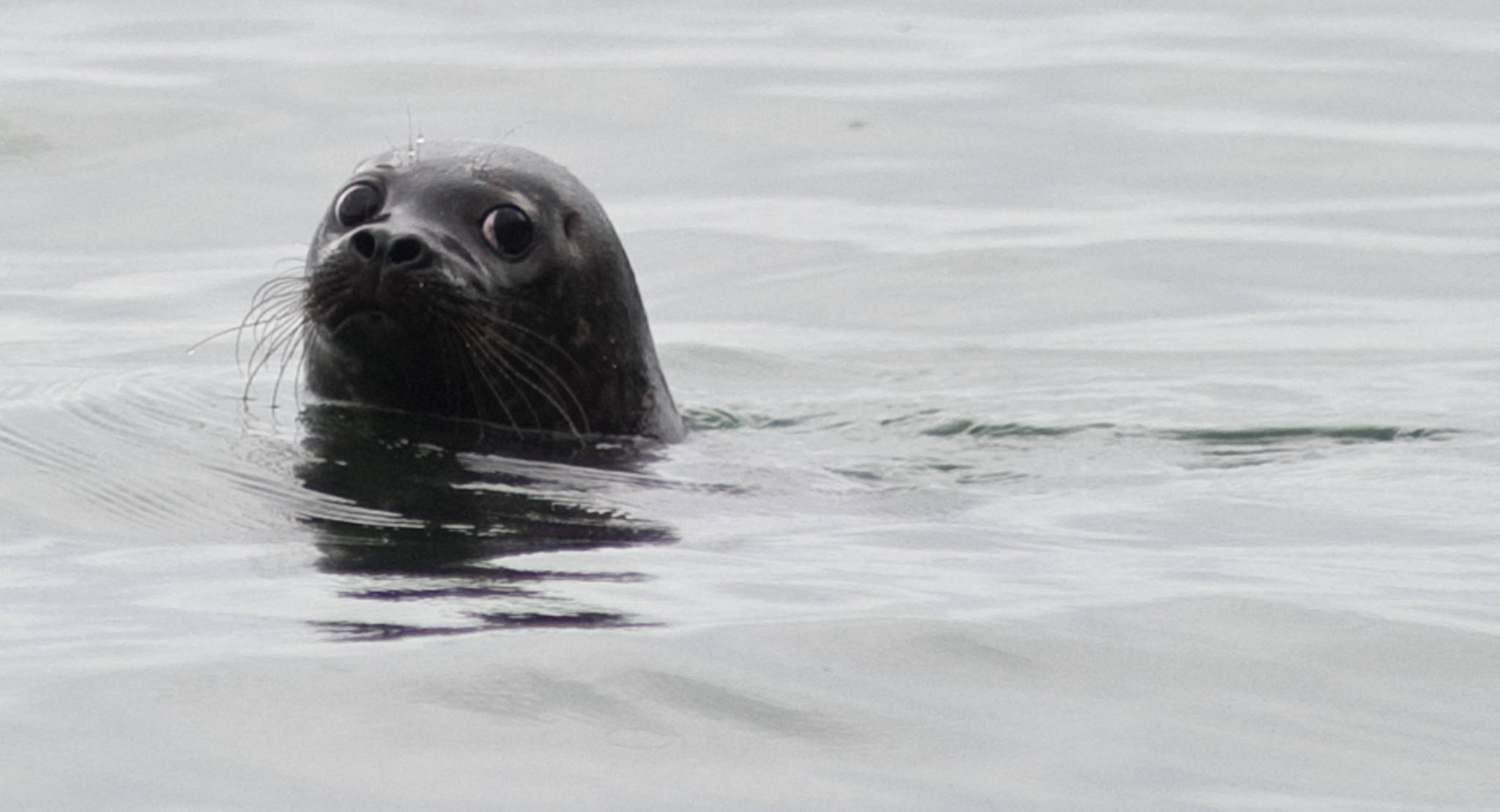After toxic levels of mercury were found in an Admiralty Island harbor seal in 2015, conservationists and subsistence hunters are still wondering if a Juneau-based mine is to blame.
The problem, they said at a Tuesday public meeting, is that answering that question requires more science than the state requires.
The Southeast Alaska Conservation Council and Friends of Admiralty Island gathered Tuesday at the Elizabeth Peratrovich Hall to introduce a petition asking for increased environmental monitoring at Hawk Inlet, where the mercury-laden seal was taken. Greens Creek Mine, the world’s second-largest silver producer, has operated there since 1989.
Angoon subsistence hunter Joe Zuboff said residents of the small Admiralty Island community are “crossing their fingers” that the mercury levels found in the 2015 seal were the exception, not the rule. Zuboff travels the roughly 50 miles to Hawk Inlet in winter to hunt seal, but like many Angoon seal hunters, Zuboff has avoided taking seal in the area as a precaution.
“We’ve been monitoring these lands for quite a while and we’ve never had this battle of, can our children eat these foods? Are they going to be affected?” Zuboff said. “I hope that it isn’t too late.”
Consuming high levels of mercury can be dangerous for pregnant women or women who are planning on having children. Angoon residents shared and consumed the seal before mercury testing results were available.
Sampling from the seal, taken from organ tissue samples in the liver and kidney, showed levels mercury levels many times higher than normal. Save for a flawed study of a Kodiak seal, marine ecologist Michelle Ridgway couldn’t find comparable levels of mercury in an Alaska seal in 245 cases she discovered while conducting testing the seal.
She said she also found elevated levels of mercury in several other species in the area. But testing is expensive, she said, so there is only so much scientists can pin down without state funding. Ridgway’s mercury testing was funded by Friends of Admiralty Island and conducted by a lab in Seattle.
None of Greens Creek’s monitoring programs have ever shown increased levels of mercury in the Hawk Inlet area, mine spokesperson Mike Satre said. Satre added that they’d “of course” conduct whatever monitoring the state requires.
Speakers at Tuesday’s meeting agreed that Greens Creek is doing what sampling they’re required. But SEACC’s Guy Archibald said it isn’t enough to protect Angoon’s subsistence hunters from possible increases in concentrated metals.
“The mining company is doing what mining companies are supposed to do … their duty is to their shareholders,” Archibald said. The petition is addressed to state and federal regulatory agencies, which he said are too often on the side of industry instead of the public.
SEACC’s petition requests the mine redo a comprehensive “baseline” study, which was last conducted in 1981. A new study, Archibald said, would show the mine’s true effect on the area, which he says current monitoring is unable to do.
A lot has changed since the 1981 study, Archibald emphasized, as the mine has expanded twice and suffered an ore spill in 1989.
When the mine opened, Satre explained, Greens Creek took water samples from a large swath of Hawk Inlet. But after years of sampling showed little effect in most of the Inlet, the state allowed them to narrow their sampling area.
Gaps in the sampling data would mean that a new baseline study would be tough to draw conclusions from, Satre added.
“We understand there’s a push for a new baseline study, but it’s important for people to understand that there are years of data needed” to draw comparisons between the studies, Satre said. “If you are going to ask for this, then it needs to be done on a regular basis.”
In addition to updating the baseline study, SEACC wants the mine to restructure their water treatment process and further study the 1989 ore spill. A 2016 state report concluded that a cleanup of the spill would mix up polluted sediment, causing further environmental harm.
The fourth SEACC proposal suggests turning Hawk Inlet into a “living laboratory” to study mining best practices.
• Contact reporter Kevin Gullufsen at 523-2228 or kevin.gullufsen@juneauempire.com.

